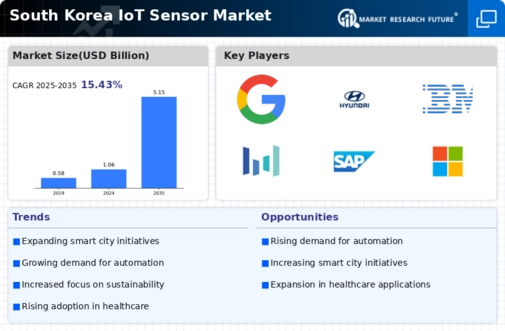The South Korea IoT Sensor Market has become increasingly competitive as businesses and consumers continue to adopt smart technologies across various industries. This market is characterized by a diverse range of players that are consistently innovating to meet the growing demand for connected devices and advanced sensor solutions. Companies are focusing on enhancing their product portfolios with cutting-edge technologies, such as artificial intelligence and machine learning, which are essential for effective data collection, analysis, and management within an IoT ecosystem.
As the demand for smart homes, smart cities, and industrial automation grows, players in the South Korean market are coming up with strategies that enhance their market presence, foster partnerships, and leverage localized R&D capabilities to differentiate themselves from competitors.
Google has established a notable presence in the South Korea IoT Sensor Market primarily through its advanced technology and cutting-edge software solutions. The company's strengths are underscored by its significant investment in artificial intelligence and cloud computing, which are vital for the development of IoT.sensor technologies. Google’s robust infrastructure supports the vast data processing and analytics needs of various industries, making it an attractive partner for businesses looking to enhance their IoT capabilities in South Korea.
By focusing on optimizing user experiences and developing seamlessly integrated ecosystems, Google is able to set itself apart from competitors, tailoring its offerings to meet the specific needs of South Korean consumers and businesses engaged in the IoT space.
Hyundai Motor has positioned itself as a formidable player in the South Korea IoT Sensor Market, leveraging its extensive experience in automotive technology and smart mobility solutions. The company offers a range of key services, including connected car technology, vehicle sensors, and advanced driver-assistance systems, enhancing the overall user experience in smart transportation. Hyundai Motor's strengths lie in its robust research and development capabilities and partnerships with technology firms to innovate continuously.
The company's strategic initiatives, including mergers and acquisitions with tech startups, further bolster its market presence by integrating cutting-edge IoT sensor technologies into its vehicles. By actively investing in sustainable mobility solutions and collaborating with local and global partners, Hyundai Motor is well-positioned to meet the burgeoning demand for IoT-enabled services in South Korea.







